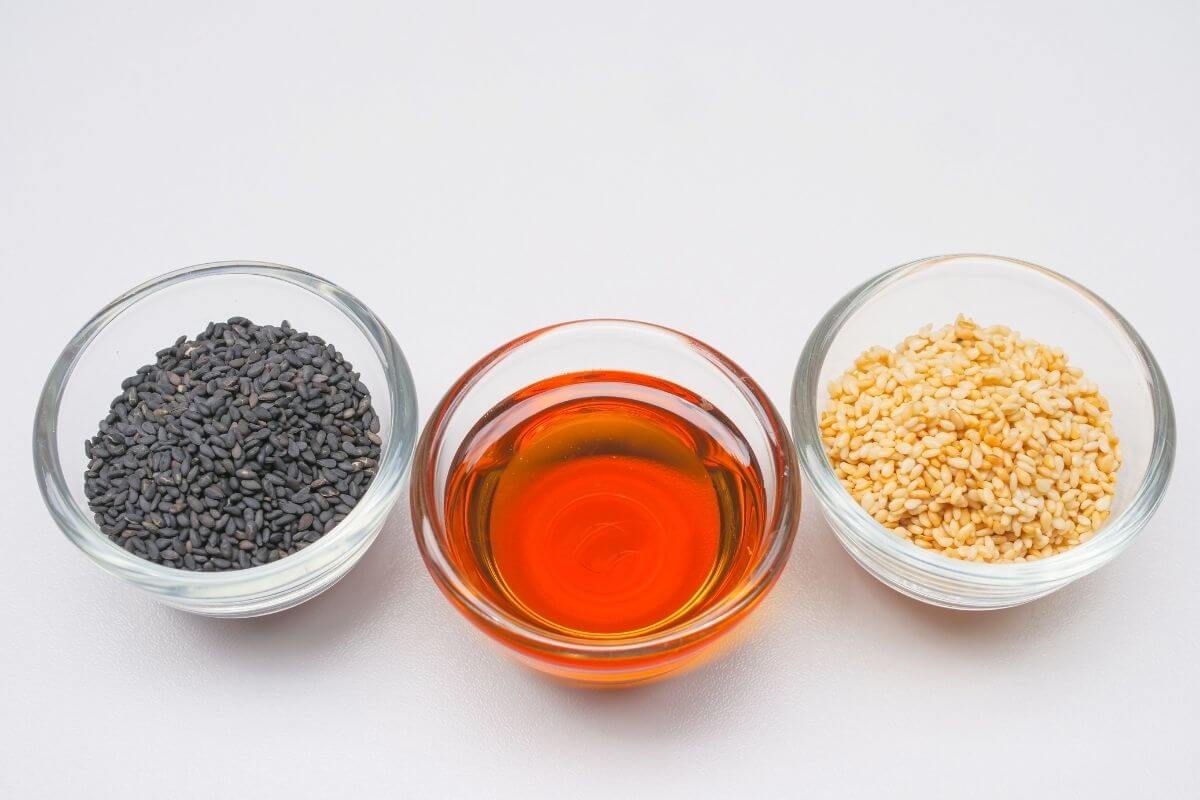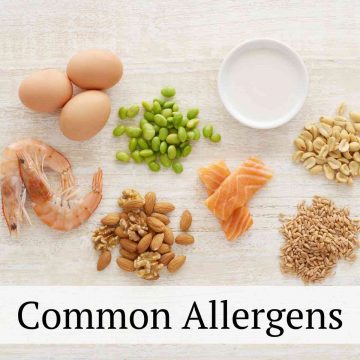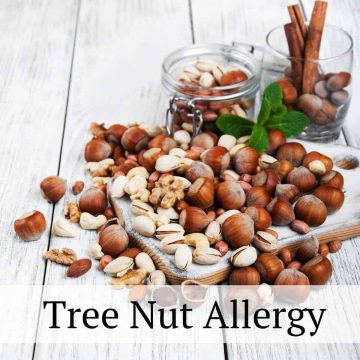Sesame allergy is a common food allergen worldwide and the 9th most common in the United States. This guide covers tips on how to manage a sesame allergy.

Sesame allergy is a growing concern in the U.S. In fact, studies show its prevalence is similar to common food allergens soybean and fish. The increase in allergic individuals is thought to be related to the increased use of sesame seeds and sesame oil in commercially prepared foods.
Because of the recent increase in sesame-allergic individuals, the U.S. Food and Drug Administration has passed the FASTER act.
The FASTER Act requires sesame to be labeled as an allergen beginning on January 1, 2023, and included in the Food Allergen Labeling and Consumer Protection Act (FALCPA).
With this change to labeling laws in the US, managing a sesame allergy will be much easier!
In the meantime, it is important for those with a sesame allergy to become familiar with ingredients and foods that often contain sesame.

Foods containing sesame
There are many types of sesame seeds but the most common are brown/golden, black, and white.
Sesame seeds contain about 50-55% oil and 25% protein. They are often used in baking to top bread, bagels, buns, and crackers, and are used in other baked goods.
Other food items that can include sesame include:
- Asian cuisine (sesame oil is commonly used in cooking)
- Baked goods (such as bagels, bread, breadsticks, hamburger buns, and rolls)
- Bread crumbs
- Cereals (such as granola and muesli)
- Chips (such as bagel chips, pita chips, and tortilla chips)
- Chutneys
- Crackers (such as melba toast and sesame snap bars)
- Dipping sauces (such as baba ganoush, hummus, and tahini sauce)
- Dressings, gravies, marinades, and sauces
- Falafel
- Flavored rice, noodles, risotto, shish kebabs, stews, and stir fry
- Furikake (a condiment used in Japanese cuisine)
- Goma-dofu (Japanese dessert)
- Gomashio (a condiment used in Japanese cuisine)
- Herbs and herbal drinks
- Hummus
- Margarine
- Pasteli (a Greek candy bar made with honey and seeds)
- Processed meats and sausages
- Snack bars, protein, and energy bars
- Snack foods (such as pretzels, candy, Halvah, Japanese snack mix, and rice cakes)
- Soups
- Sushi
- Tempeh
- Turkish cake
- Vegetarian burgers

It is also important to note that certain skin/body products, nutritional supplements, and medications may contain sesame oil.
Ingredients indicating sesame
Watch for the following ingredients on food labels to identify sesame in foods:
- Benne, benne seed, benniseed
- Gingelly, gingelly oil
- Gomasio (sesame salt)
- Halvah
- Sesame flour, oil, paste, salt, seed
- Sesamol
- Sesamum indicum
- Sesemolina
- Sim sim
- Tahini, Tahini paste, Tahina, Tehina
- Til
The following ingredients may contain sesame.
- Artificial Flavors
- Natural flavors
- Spices
If you have an allergy to sesame, it may be helpful to contact the food manufacturer to find out if these ingredients are derived from sesame.
Sesame allergy FAQ's
Can I have sesame oil?
Research shows that highly refined oils from specific allergens such as soybean and peanut can be consumed safely. Sesame oil is not highly refined and therefore should be avoided.
Is a sesame allergy the same as a nut allergy?
No, sesame is a different allergen than tree nuts and peanuts. In other words, just because you are allergic to sesame does not necessarily mean that you need to avoid nuts or even other seeds. It is best to work with your allergist to determine which foods you need to avoid rather than over-restricting your diet.
Where can I find sesame free foods?
Cooking meals at home, with minimally processed ingredients, is the most effective way to have sesame free foods.
The allergy free recipes here are free of sesame. Here are a few of our favorites:
Where can I find an allergist?
If you don’t have an allergist, you can ask your primary care provider for a referral to an allergist specializing in food allergy in your area.
You can also check out the following resources to find one:
American College of Allergy, Asthma, and Immunology
American Academy of Allergy, Asthma, and Immunology
Resources:
https://www.aaaai.org/conditions-and-treatments/library/allergy-library/spice-allergy, accessed September 2020
Christopher M. Warren, PhD,1 Avneet S. Chadha, BS,1 Scott H. Sicherer, MD,2 Jialing Jiang, BA,1 and Ruchi S. Gupta, MD, MPH, JAMA Network Open, August 2019, Prevalence and Severity of Sesame Allergy in the United States, https://www.ncbi.nlm.nih.gov/pmc/articles/PMC6681546/
- Sesame Allergy - October 25, 2020









Worried Mama says
Bread suggestion and other gluten options for sesame and tree nut allergy safe options? (Don’t want to eliminate gluten and risk developing an allergy for that down the road due to lack of exposure)
Kristi Winkels, RDN, LD says
Hi there,
This is a great question that I don't have a comprehensive answer to but I did find one option for you to look into (please always do your own checking to make sure that this works for you).
Angelic Bakehouse bread appears to be free of 8 of the 9 most common allergens (including sesame). I hope that helps!
Best wishes,
Kristi